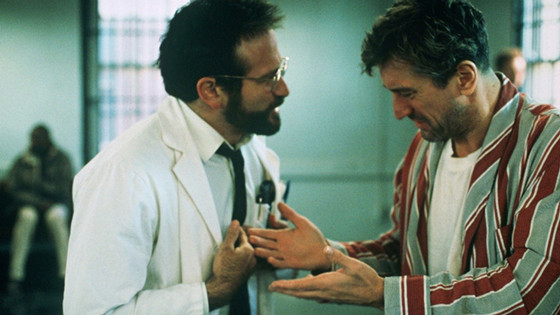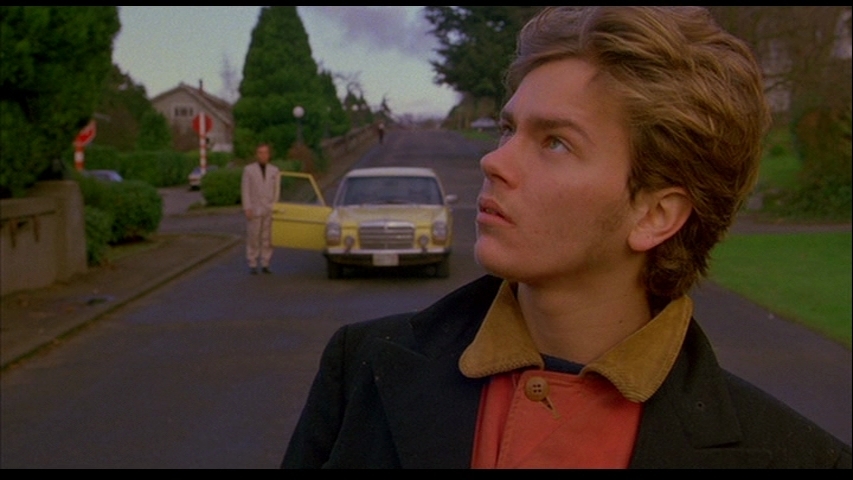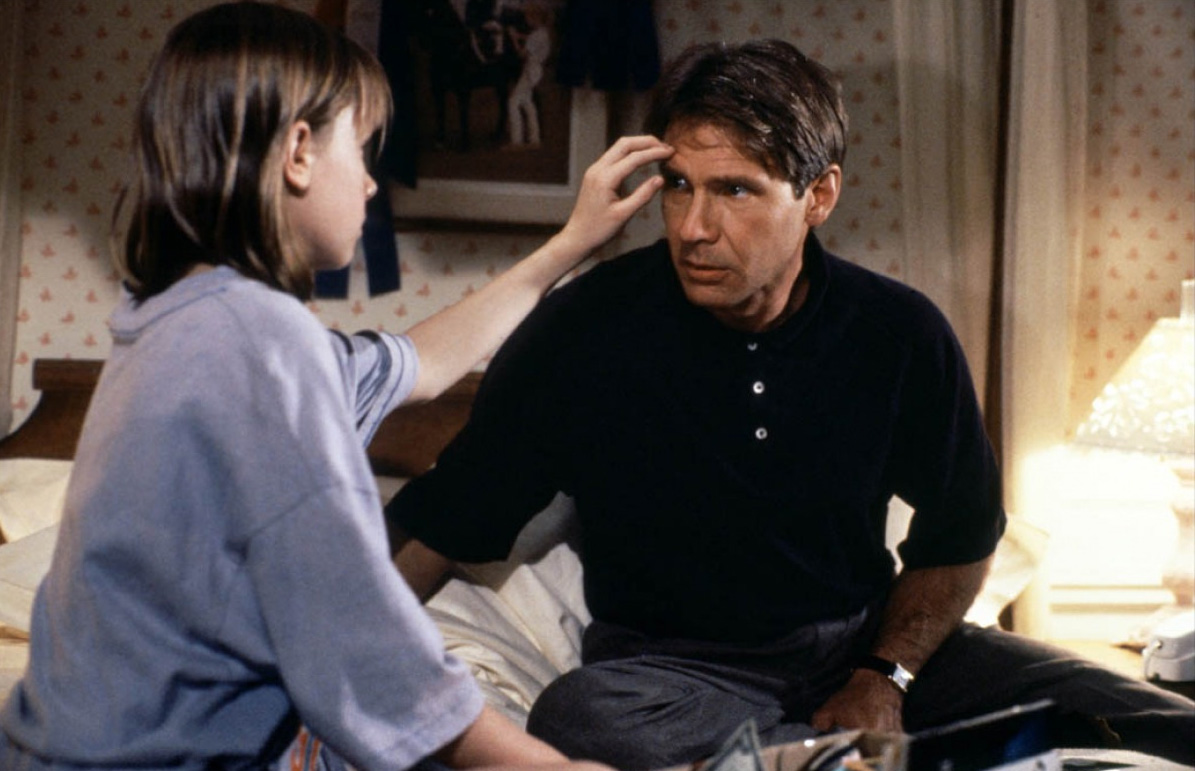
Concerning human behaviour, the experimental field that studies the structures and functions of the brain, related to the particular psychological processes, is constantly developing amid the scientific societies. Although neuropsychology expands into different branches in the study of the brain, most of its researchers have a tendency to contribute to the area of the diagnosis and treatment of the effects of neurological disorders.
The film industry not only depicts with compassion and inspiration some of the touching stories of the personal resilience of these disorders, but it also provides meaningful insights into these medical conditions and the daily struggles the patients have to experience.
The following list attempts to introduce some examples of the sensitive and expressive films that deal with neurological disorders and their effects in human behaviour.
1. On Golden Pond (1981)

Henry and Jane Fonda re-enact a father-daughter relationship, although not similar to their real-life situation. In this award-winning film, Ethel and Norman Thayer, an elderly couple, return to their lake house to spend some weeks in retirement from society’s rush and responsibilities, and where Norman’s memory problems arise. Their daughter Chelsea visits, accompanied by her fiancé Bill and his young son Billy.
Chelsea and Norman always had a difficult relationship, for he acted as a tough father figure for Chelsea, and their short meeting is filled with frustration. Soon after, she travels with Bill to Europe, leaving young Billy in the care of the elderly couple, with whom he developed a special friendship. When Chelsea returns, now married to Bill, she tries to reconcile with her father and finally does it after an overcoming jump to the lake, something her father criticized her of weakness all her life.
The memory problems Norman suffers is a part of dementia, a wide range of symptoms associated with reduced abilities of everyday activities and memory loss. It accounts Alzheimer’s diseases for most of the cases that can be caused by reversible conditions, such as thyroid problems and vitamins deficiency.
However, it is mostly associated with damage to the brain cells, interfering with the communication between the neurons and, therefore, affecting normal thinking, feeling and behaving. Depending on the area the damage is interfering, the function associated with it is no longer performed; for example, injury in the hippocampus affects learning and remembering, a case observed in Alzheimer’s.
Specifically, dementia’s major symptoms are associated with malfunctions of the mechanisms of memory, communication, attention and focus, judgment and sensory perception, most of them represented in Norman’s behaviours, especially the problems with short-term memory and spatial perception.
2. Paris, Texas (1984)

This film, directed by Wim Wenders, tells the peculiar tale of a man named Travis who lost his memory of his past four years, the same years that he disappeared and left his wife and son alone. After Travis is found wandering the desert, his brother Walt travels to Texas to reconcile with his brother and attempts to find out where he had been all those years.
After some silence and divergence, Travis tells Walt he does not remember anything of those four years. However, some of his memories start to come back responding to different stimuli; for example, the super-8 film of his family and the meeting with his son, who does not remember him.
Throughout the film, Travis recovers all of his memory and is able to find his lost wife, Jane, who left their son in the care of Walt and his wife, Anne. When he finally finds Jane, the audience then acknowledges the real reasons behind Travis’ and Jane’s disappearance.
The episode of retrograde amnesia Travis suffers for some time is a form of amnesia where the person is unable to remember facts that occurred before the amnesia, but can still produce new memories. It is the effect of a brain injury in the area of the hippocampus and in Broca’s or Wernicke’s areas, that are linked to speech and language production and information, the areas associated with declarative memory, for he can still remember words and general knowledge but not specific events in his life.
Although the film does not clarify the cause of his short-term amnesia, it does not matter for the atmosphere of the film, because it allows the audience to enter the story and empathize with the characters in a singular manner.
3. Rain Man (1988)

Charlie Babbitt is a young schemer who finds out his distant father died and he inherited his convertible car. Charlie finds out that the rest of the fortune goes to a mental institution, in which Charlie’s unknown older brother was a patient. To get hold of the money, Charlie flees with Raymond, an autistic savant, and they spend some time on a road trip together, ending up in a casino counting cards to get the money Charlie owns in his hustler businesses.
Raymond’s savant syndrome is a spectrum of the autism disorder, in which symptoms are deficits in social communications and cognitive capacities, as well as repetitive and restricted patterns of activities or interests. One distinguished characteristic of the savant syndrome is an elevated cognitive ability, such as counting cards and remembering quantitative facts, as Raymond does.
The causes of this syndrome, similar to those of the autism disorder, are associated with a damage on the left anterior temporal lobe, the area responsible with the sensory input and recognizing objects and forming visual memories, characterizing some form of central nervous system disease.
Charlie begins his journey feeling prejudices towards his older brother, but turns out experiencing an emotional connection with him and decides to create a healthy relationship, for this syndrome, and the autism spectrum disorder, do not prevent people from bonding, even though it makes it harder.
4. My Left Foot (1989)

This is the moving story of Christy Brown, an Irishman who was born with cerebral palsy and had only the movement of his left foot, which he used for everything, including painting. The film traces the struggles Christy and his family had to go through, fighting prejudices and difficulties, because Christy’s condition required quite a bit of effort, time and money he could not receive. Regardless of the difficulties, Christy was able to fight his disability and become a successful and peculiar painter, composing a story of overcoming.
Cerebral palsy is a disorder that limits muscle movements and motor skills. It characterizes brain damage that happens during pregnancy or in the first years of the child’s life. It can lead to other health problems, such as vision, hearing or speech impairment and learning disabilities.
It is a common disorder of childhood and many cases of brain injury; for example, poisoning, meningitis or severe accidents, during early childhood or infancy, can lead to cerebral palsy. Because the damage or malformation happens during brain development, it affects muscle control, coordination, tone, posture, reflex and balance of the child.
The film was based on Christy’s autobiography, telling his touching story of supporting his family and reaching his aspirations as an artist.
5. Awakenings (1990)

This drama was based on Oliver Sacks’ memoir about a physician who started working at a hospital in New York with several catatonic patients diagnosed with encephalitis lethargica, after the epidemic occurrence between 1917 and 1928.
Dr. Malcolm Sayer focuses his work of trying to get physical responses from these patients on Leonard Lowe, one of the intriguing cases of encephalitis. After some attempts with auditory and visual stimuli, Sayer gets authorization from Lowe’s family and the hospital director to test on him the new medication L-dopa. The results are astounding and Lowe, and afterward the other patients, gains all his movements and, therefore, some of his freedom.
The encephalitis lethargica is an acute inflammation of the brain that leaves most of its victims in a paralyzed condition, speechless and motionless. The encephalitis provokes a sore throat, headaches, fever, lethargy, and catatonia, between other symptoms. The cause of this specific case may be the influenza pandemic of 1918, followed by an outbreak of post encephalic Parkinsonism, represented in the film as the onset of Leonard’s condition, by attacking the victim’s immune system.
Because the neurodegenerative disease is so similar to Parkinsonism, the medication Levodopa produced relevant responses from the patients, beginning a new outlook concerning this disease and the most effective conducts toward the patients.
6. My Own Private Idaho (1991)

This Gus Van Sant film tells the story of Mike, a gay street hustler who suffers from narcolepsy and is trying to reconnect with his mother. His friend and hustler colleague, Scott, helps him with both his sleep condition and the location of his mother. However, in the end, their journeys take different paths and they separate.
Mike’s neurological disorder affects the controls of the periods of wakefulness and sleep, provoking excessive sleepiness during the wakefulness hours and uncontrollable episodes of sudden sleep that may occur in any time of the day, during any activity, but in the film it happens when Mike experiences stressful situations.
The person suffering this disorder enter REM sleep almost immediately, (in normal people it would take about 90 minutes), and periodically. In this phase of sleep, people experience dreams and muscle paralysis, explaining characteristic symptoms of narcolepsy. It usually begins in the stages of adolescence and the beginning of maturity, but it is mostly undiagnosed and untreated.
The episodes of narcolepsy are represented in the film by the dreams with Mike’s mother brushing his head and telling him that everything will be alright, a resource that could link the cause of the disorder to the condition Mike is in, living in the streets and chasing after his mother.
7. Regarding Henry (1991)

Henry Turner is a workaholic lawyer and does not spend much time with his wife and daughter. After a robbery, he is a victim of a shooting and suffers a brain injury. Henry wakes up only to find himself unable to speak, move and remember anything.
He then returns home after some time in the hospital, recovering his basic actions, mobility and speech, and enters an atmosphere of complete oblivion. Henry begins to know, once more, his family and presents himself as the most caring and loving husband and father, for he later acknowledges his regret for being absent before he lost his memory.
Henry suffered hypoxia, a condition in which a part of the brain was deprived of the adequate supply of oxygen. This condition affected his mobility and his speech because parts of the brain responsible for these actions must have been injured. It is mostly the area of the hippocampus and the Broca’s and the Wernicke’s areas, for he lost both his declarative and procedural memories, the abilities to form conscious recollections of the events and to form unconscious recollections of skills and habits.
The film does not focus on the neurological causes and effects of the hypoxia Henry suffered, but the consequences the retrograde memory had on his relationship with his family.